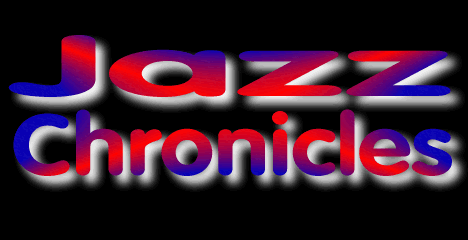 Mid-1950s
Mid-1950s
In 1954, radio disc jockeys in the Southern States started playing 'That's All Right Mama' by a young new singer named Elvis Presley. Telephone switchboards were jammed with requests to hear it over and over. The phenomenon was a sea-change in music that knocked jazz from its pedestal in popular music. This thing called Rock and Roll suddenly made the routinely fashionable jazz of the early fifties sound not just cool but dead cold.
When cool jazz came into being by the 1950s, it was seen as elegant and stylishly lyrical. A kind of music which flattered the tastes of post-war youth.
But with the coming of Rock and Roll, the sentimentality , the soft emotions and, often plain blandness which crooners born to the dance band era delivered were suddenly wiped away. Swiftly, cool jazz was seen as repressed and an emotionally disengaged form of music that seemed to point to uptightness rather than poise.
Cool jazz, for many musicians, had never ever been viewed as the way to play ever. Bebop's influence remained strong with many musicians even as as it swept over the jazz scene in the early 50s.
Among the followers of Charlie Parker and the bebop movement were musicians like Hampton Hawes the West Coast bop pianist.
Then, there was bassist Charles Mingus who, with Max Roach, set up their own record company to specialize in difficult new music. By the mid-fifties he formed a kind of workshop to explore bebop, gospel and blues-influenced music.
Sax player Sonny Rollins, who blended the styles of Parker, Lester Young and Coleman Hawkins, was at work with Miles Davis and Thelonious Monk and later with Max Roach and Gillespie's young disciple Clifford Brown to deliver a crisp and strong style of bebop.
Dexter Gordon formed an exciting boppish two-tenor partnership with Wardell Gray.
Art Blakey formed a group, Jazz Messengers, influenced by bop and by the ideas of the bluesy, gospel-inlfuenced pianist Horace Silver ( who talked about 'funk' a good 25 years before it became part of popular jazz vocabulary).
None of these musicians wanted to sound cool. They wanted to retain the vocal tones, hot vibrato, urgent ensemble sounds and punchy rhythm sections. While too dispersed to be called a movement, the style they played eventually got to be called 'hard bop'. While most hard bop players were mostly black, there were some excellent white hard boppers too - notably saxophonist Joe Farrell and the pianist Joe Zawinul who would eventually be the cofounder of the fusion band Weather Report.
By the mid-1950s the band which Miles Davis formed, after a comeback from heroin addiction, featured two players from Philadelphia - John Coltrane on tenor saxophone and Philly Joe Jones on drums, one from Detroit - bassist Paul Chambers - and from Texas, pianist Red Garland.
Davis's band played with an urgency his music had not shown for years, and Coltrane, Davis's absolute musical opposite, combined soulfulness with a single-minded objective of extending bop harmony - making him the most innovative improviser of the era.
The hard bop movement has sometimes been criticized for overindulgence in tired blues devices hung on basic or repetitive small band clichés.
Whatever the criticism, good hard bop projects an immediacy and straight-from-the-shoulder confidence that came as a welcome antidote to cool jazz. Indeed, hard bop's renewed popularity in the 80s and later is, enduring evidence of the verve and vitality of its roots in church music and the blues.
What's more, even before hard bop's revival in the 80s, its increasingly flexible structure for expressive solos will open the doors to what the sixties will call free jazz.
